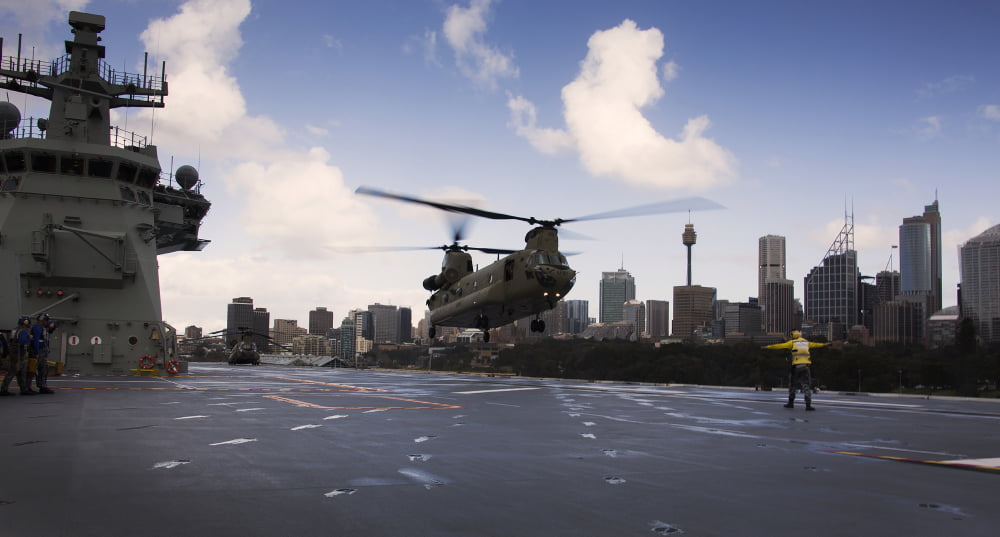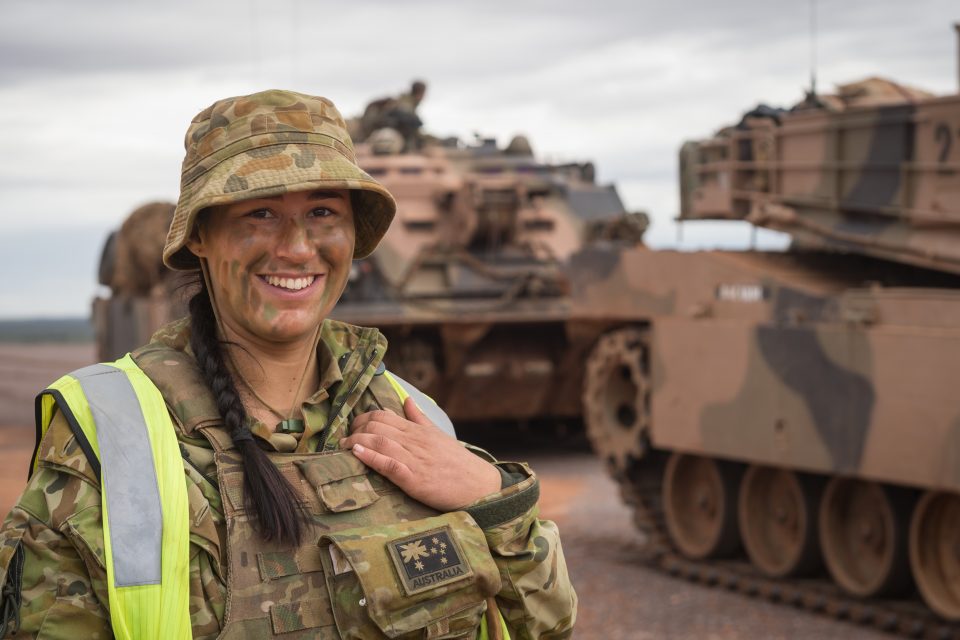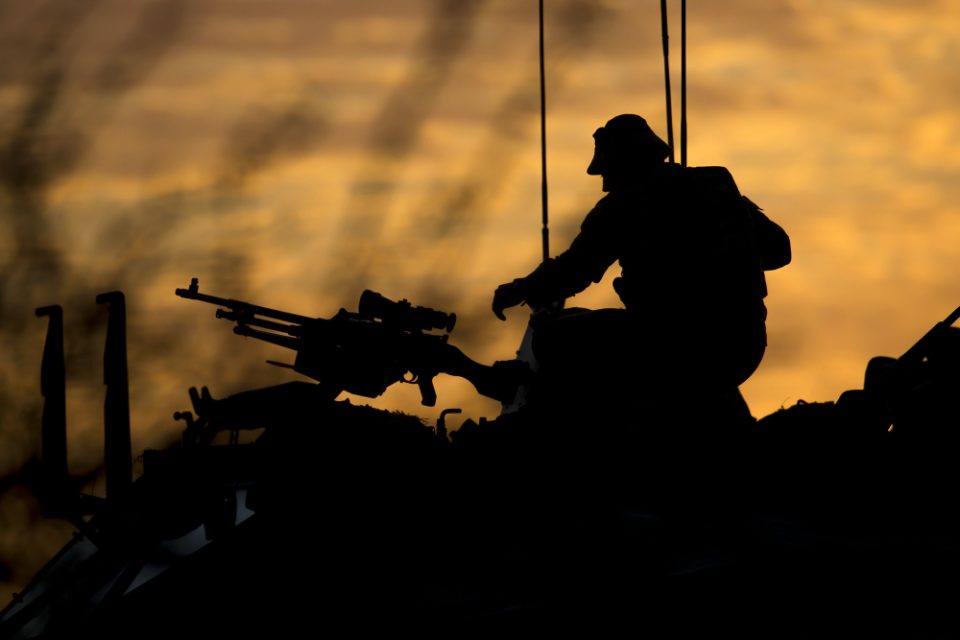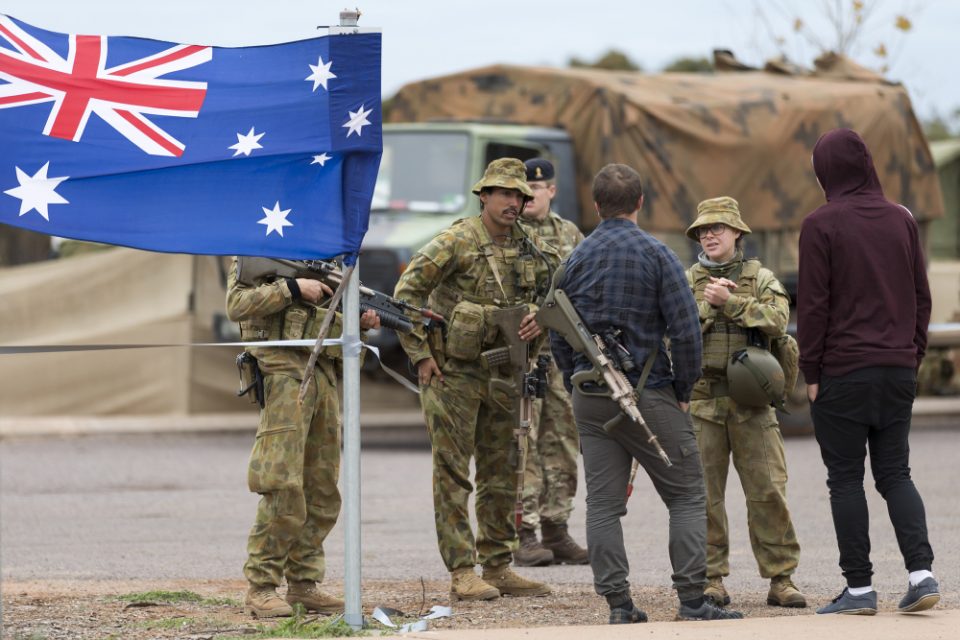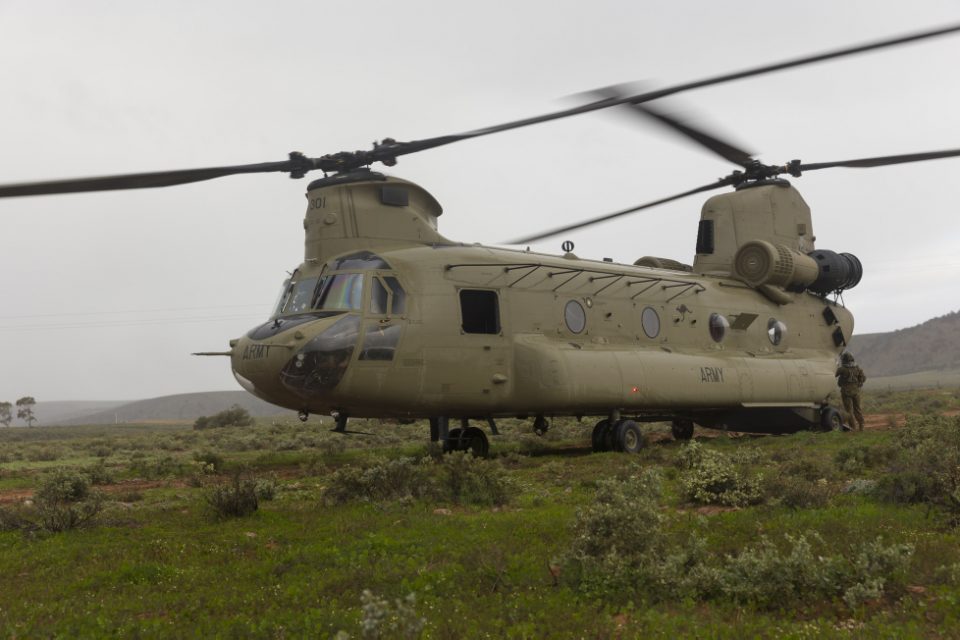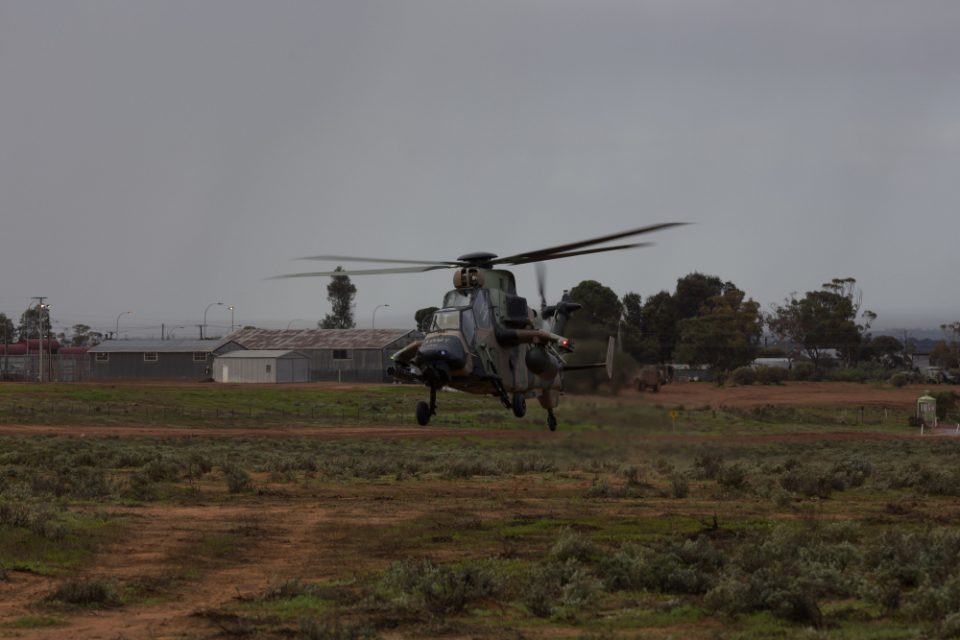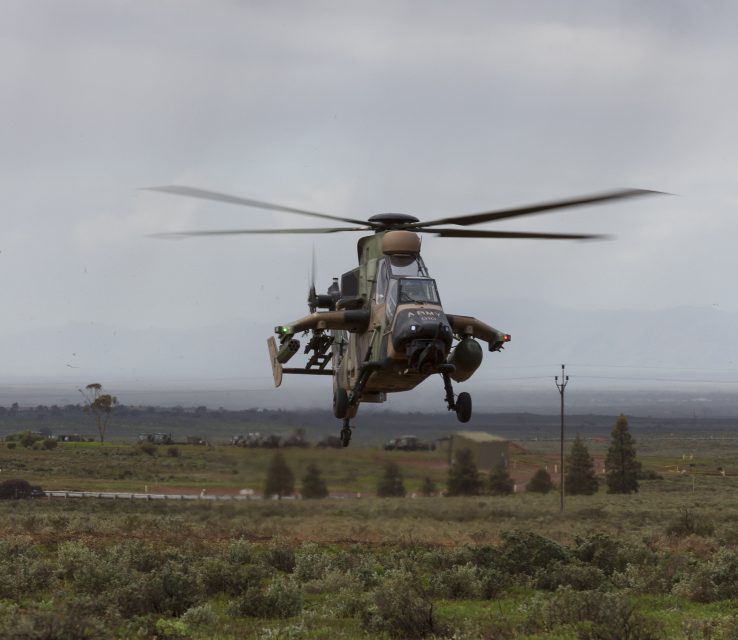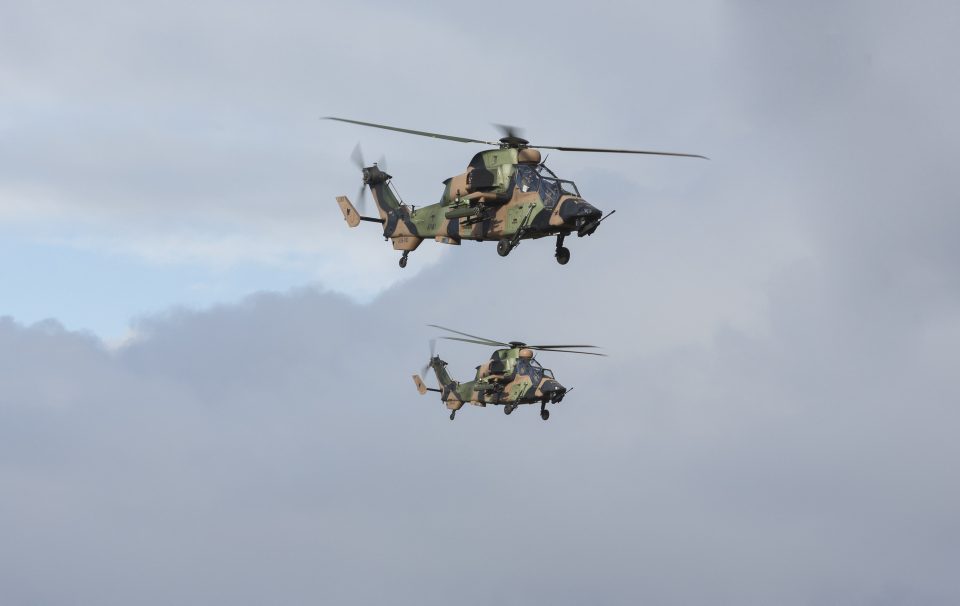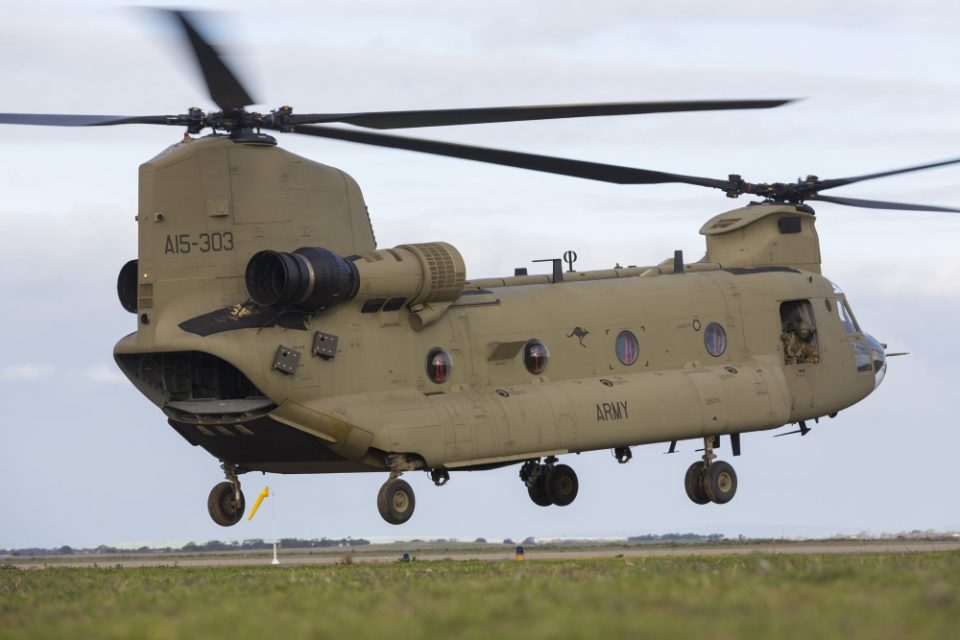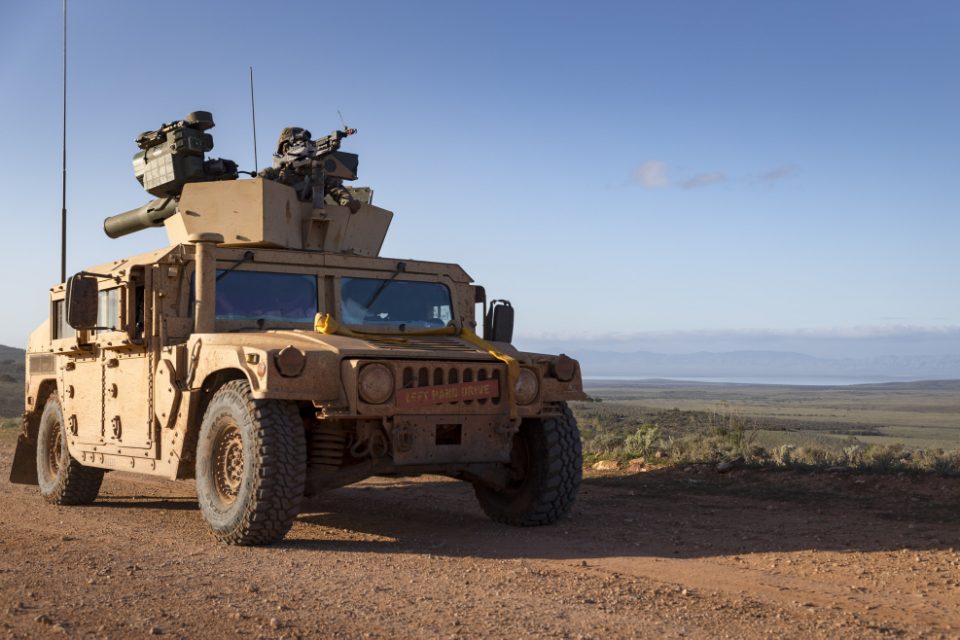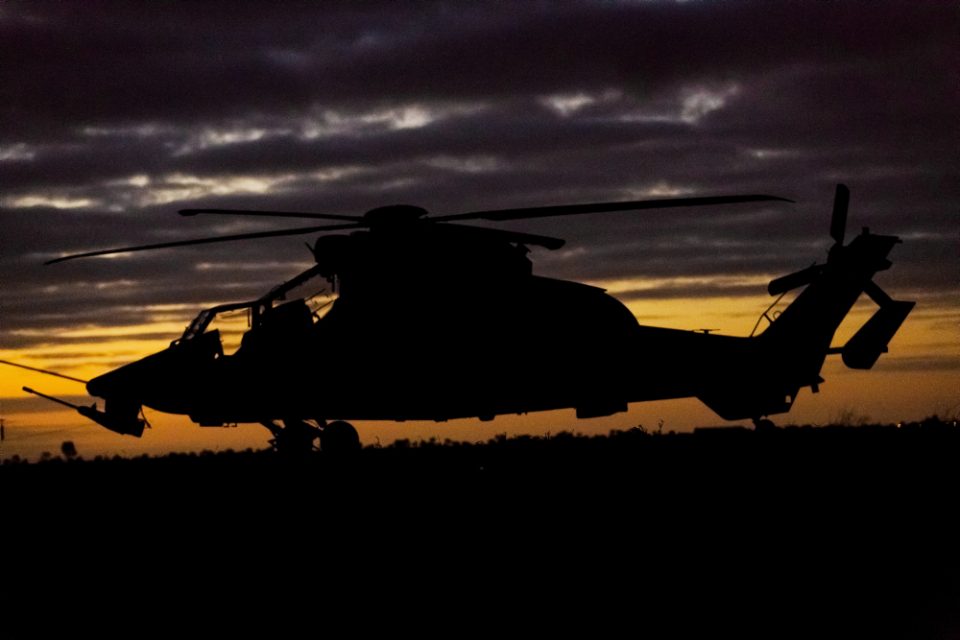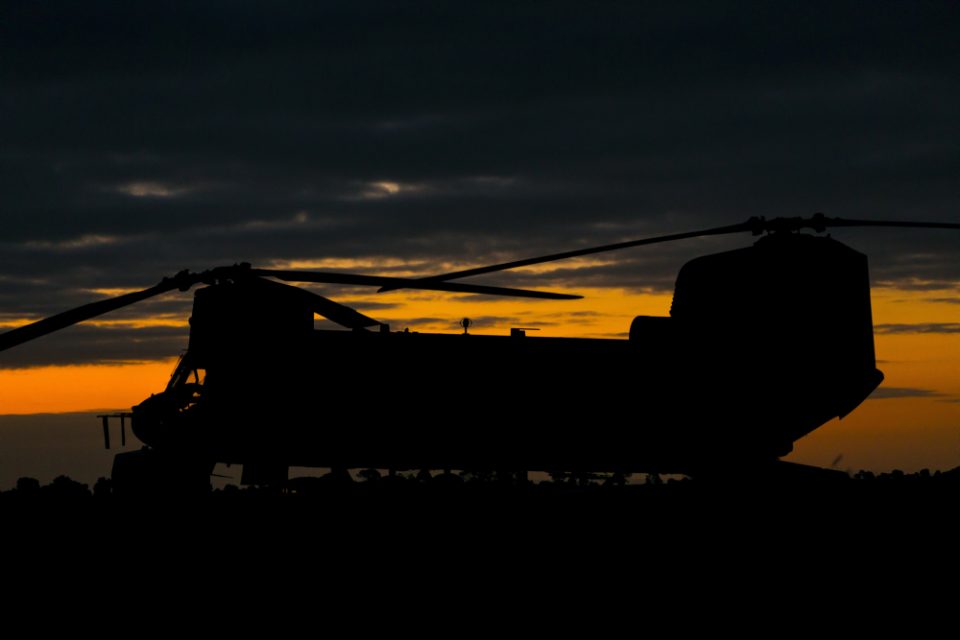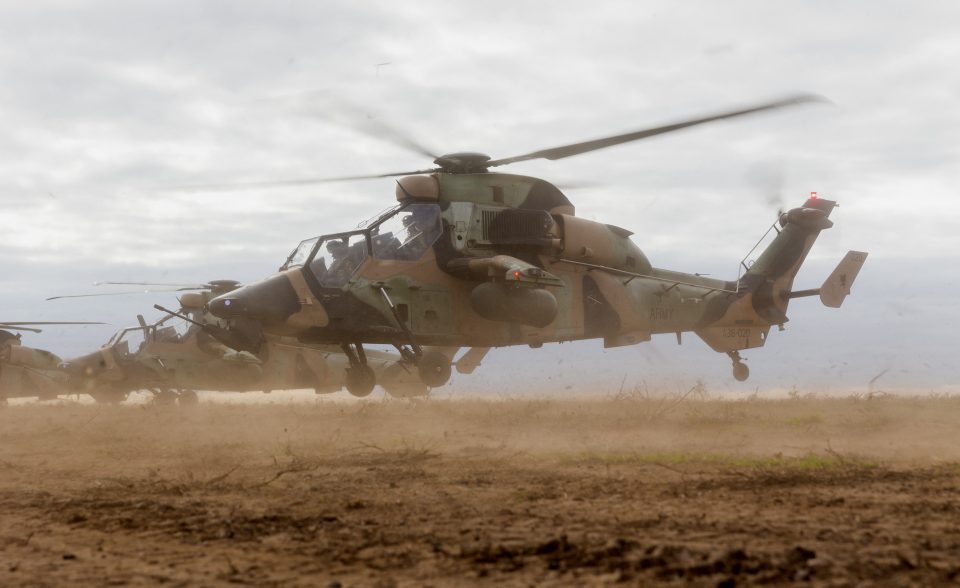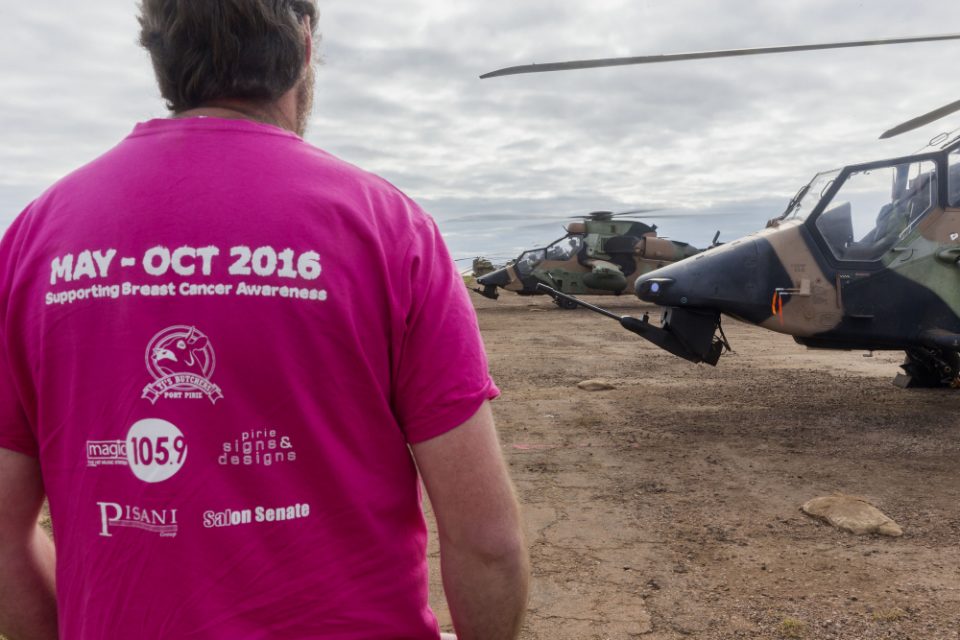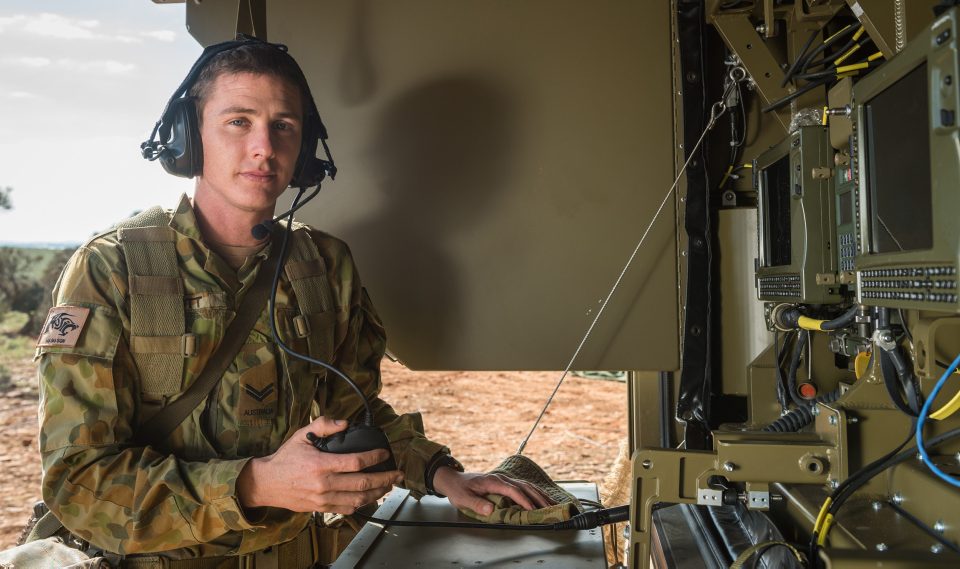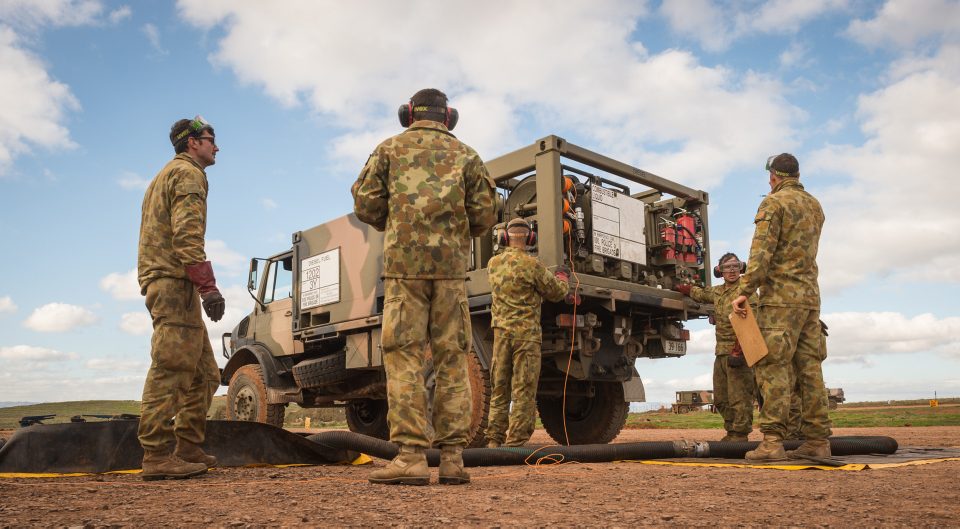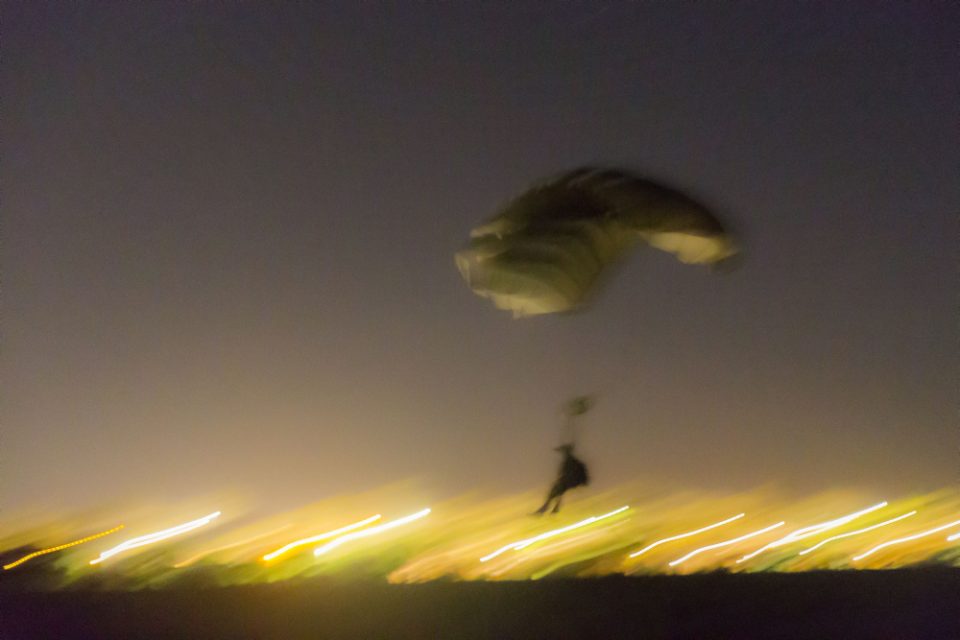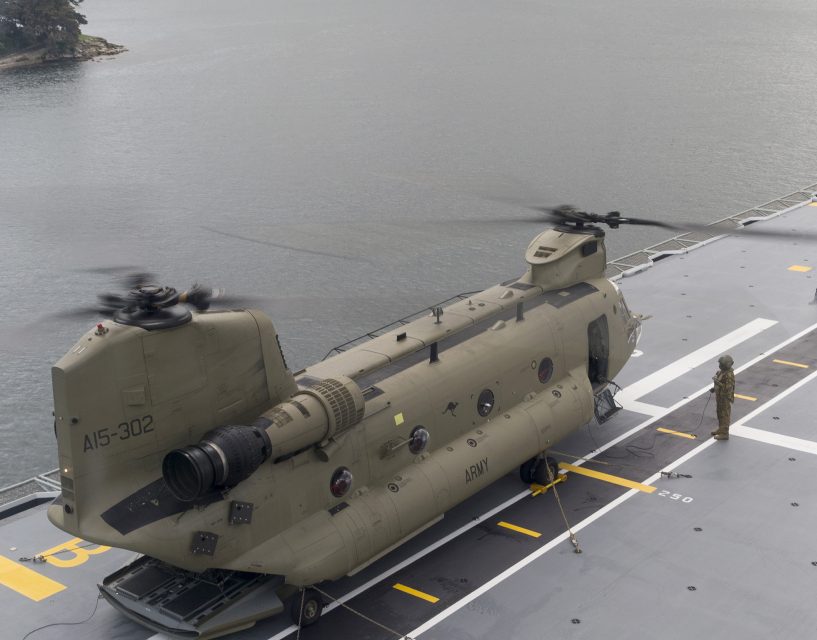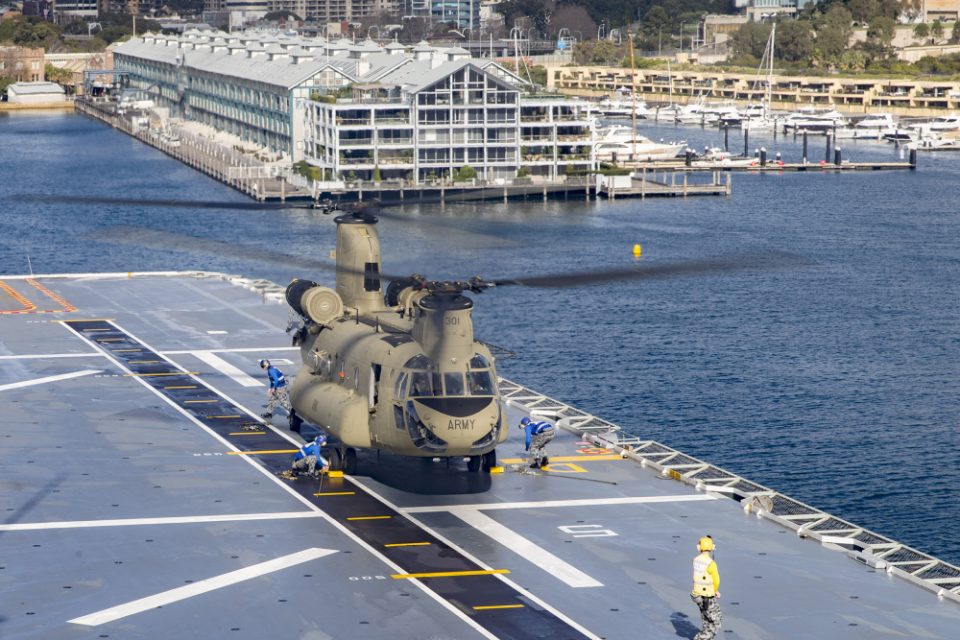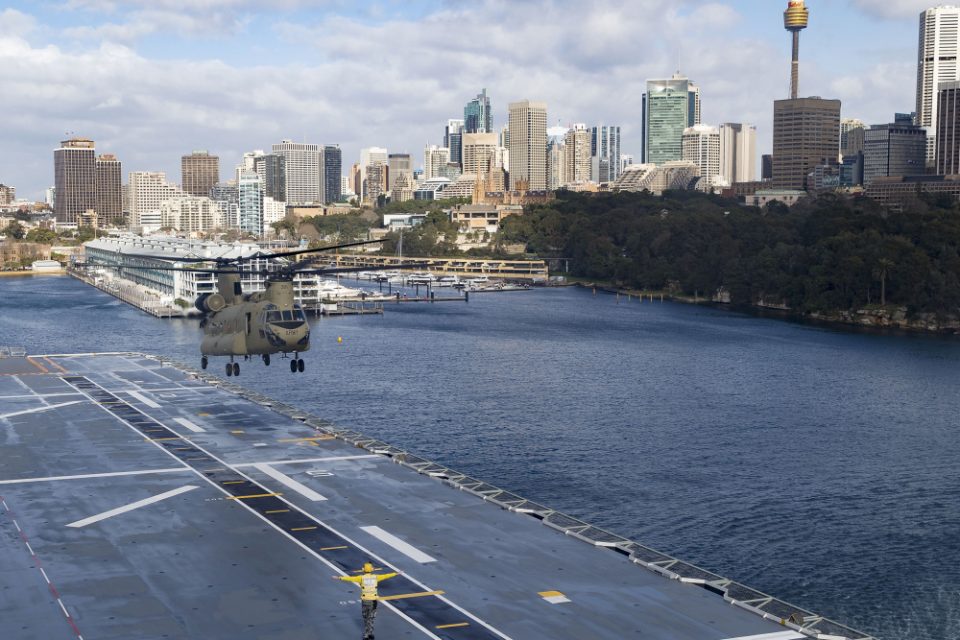2016-09-16 By Robbin Laird
During the Williams Foundation seminar on Air-Land integration, a key speaker was Brigadier General Chris Mills, Director General, Army Modernization for the Australian Army.
After his presentation, I had a chance to discuss with him his perspective on the way ahead of the Australian Army for the decade ahead.
A key point which he underscored in that interview was the following:
“I think the reality is that as we move beyond this decade, those type of joint effects need to empower the small team to achieve tactical success as the array of tactical successes transcend into an operational impact.”
After the Williams Seminar on air-sea integration, I had a chance to re-engage with BG Mills and to get an update on developments since we last spoke.
I was especially keen to discuss the perspective introduced into the latest seminar by Major General McLachlan, head of Australian Army Modernization.
Major General McLachlan discussed and analyzed the evolving role of the Aussie Army in the defense of Australia through what the U.S. Army would call Air Defense Artillery (ADA) or shaping the lower tier to a missile defense system engaged with the power projection forces.
From his perspective, the more effective the territory of Australia could be used to shape effective defenses, the more the Air Force and Navy could focus on extended operations. He characterized this as shaping an Australian anti-access and area denial force.
One development since we last talked was the recent exercise Hamel 2016 which certified First Brigade as ready to meet the Australian Government’s requirements as the Australian Defence Force’s next ‘ready’ brigade.
https://sldinfo.com/exercise-hamel-2016-2/
According to Brigadier General Mills: “In essence, First Brigade, was challenged by both our conventional force and a non-conventional arranged force combatant to look at confirming the brigade’s ability to conduct tasks from non-combatant evacuation operations, to operations against a non-conventional foe, to a conventional against a conventional plus fore, to a combination of all of those occurring at once.
And really that, that’s army’s high watermark to ensure that we can conduct the spectrums of task required of, of a small army from our peacekeeping and peace support operations to a conventional war foe.
Exercise Hamel was born out of a concern by army’s generals a number of years ago that we had spent too long just focused on preparing and conducting the foes like in Afghanistan. And for us it had been Timor and Solomon Islands and having troops supporting coalitions of the willing both in Iraq and Afghanistan. And there were some growing concerns that for a small army for that level of commitment.
We were eroding the foundational war fighting skills doctrine and capabilities that our army had previously built as our operational norm. We needed to update those skills for 21st century full spectrum operations.
We need to be able to fight continuously in three timeframes – the timeframe of focusing on recovering from the last fight while you’ve got force elements fighting the current fight, while you’ve got force elements preparing for the future fight.
And the ability to be able to fight in those three timeframes at once builds tempo.
And for a small army like the Australian Army and the Australian Defense Force, we need to be able to look at technology, tactics, techniques, and procedures that enables us to fight across those three dimensions; to minimize the time between transition from the current to the future.
We look to generate combat mass through a rapid tempo or an ability reset or re-tasking capability across the force in a spectrum of operations.
Question: Major General McLachlan specifically raised the question of the Army’s role in integrated Air and Missile defense, could you comment on that?
Brigadier General Mills: It’s in Australia’s interest to be prepared to defend our sea and air lines of communication to the north. I think the architects of the white paper very much had a view that they expected more from the army than the past and this includes in air and missile defense
We are looking a system of system’s approach where the Army provides the lower level defense and the Air Force the medium level defense but under Air Force overall leadership.
We’d very much like to be able to use in-service air force missiles.
The same missiles that potentially will be used on the medium system could be used on the short system.
Integrated air and missile defense capability talked about in the white paper is very much a first for the Australian Defense Force. The army is acquiring as well a long range land-based rocket system. You’re then talking of a land-based long range and the shipping missile capability to be acquired by the army in the foreseeable future.
The collective grouping of the integrated air and missile defense with a new long range land based rocket system for air and naval defense, will provide a mobile anti-access and area denial capability that’s significant in terms of the geography to the north of Australia supportive of our national needs and those of our coalition partners.
And by so doing, we are freeing up Navy and Air Force for other tasks.
Question: How has the air-land discussion proceeded since the Williams seminar earlier this year?
Brigadier General Mills: The concepts we introduced there are being worked in specific ways.
We have visited Williamtown and continued our work with Wedgetail.
There are Army officers on board and see Wedgetail as provided important capabilities for battle management and EW from an Army perspective. Army officers from Seven Signals EW regiment are regular riders on the Wedgetail.
They are there that we can get the best out of the systems that are available on that jet to support land forces.
Although it’s predominantly designed to support aerial combat, it has functionality that supports the ground forces as well.
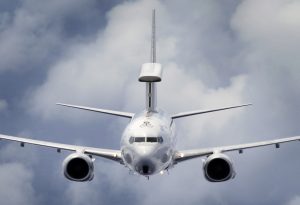
Our vision is for the small group commander to be able to leverage Air Force and Navy fire support as well.
We are working to provide the combat team commander with an evolving capability to tap into Navy and Air Force fire power to support his operations.
That is an ongoing task which is central to ADF modernization as well.
We are visiting Air Force and Navy commands to shape an effective way ahead on joint fires, surveillance and battle management solution sets.
Question: Since we last spoke, the two LHDs are operating and becoming a driving force for change in Air Force, Navy and Army.
Do you see the LHD as a forcing function for some of the changes which you are shaping for the Army?
Brigadier General Mills: We see the engagement with Navy as part of our modernization effort.
Next year we are deploying a joint digital system on the ship able to support the force ashore so that the evolution of the LHD is part of the digital future of the Army as well.
In other words, we are putting digital land C4I system onboard the LHDs.
We’re a small force.
We don’t have the luxury of some very large organizations that, that have joint effects within a single service.
We don’t have that.
We, we got a small army, a small navy, and a small air force.
We want to achieve large effects.
So I think even at the junior officer level, the way we plan and conduct our exercises, the way operations have been conducted in the last two decades, there is an expectation that joint isn’t just a word.
It’s just how, the idea of does things now.
We see the LHD being stood up from the beginning as a joint asset.
For example, the Canberra has been used to move First Brigade to the Hamel exercise area. We see it providing close air support and air mobility as well for our ground forces.
And more generally, EW for the ground forces particularly in the environment in north of Australia really does rely in the integration of air, land, and sea EW to achieve the effect. And we are looking forward to the coming of the Growler as a contributor to this effort as well.
And I think the LHD over the last five or six years has really driven the idea to start the journey to ensure joint with more than just a throw away word.
We are starting the journey of working the sequences of air lift, sea lift, overhead support, C2 and the insertion of the ground forces.
In what circumstances do we use which assets to put a force ashore and support its operations?
LHDs are now part of that and the RAAF changes with the C-130Js and C-17s are as well.
We’re a small defense force operating in a very large environment.
We very much feel that we’ve got a requirement to support like-minded countries and play our part in a global rules-based order.
We need to be able to achieve large effects with a leveraged force.
Our army wants the air force to be the best small air force in the world, and we want our navy to be the best small navy in the world.
Because if they’re not, the army’s not going be able to get to where it needs to get to and be sustained in the fight to achieve the desired effect.
Our army looks to achieve effects on the ground. That’s what it’s been designed to do.
To do that, it must be supported by air force and navy but it must be capable of rapidly changing and re-tasking.
It must be well-protected.
And it must be able to sustain itself in austere environments.
One of the benefits of living in a large country with a dispersed population is that the Australian army has grown up on being able to sustain itself in austere environments for long periods of time.
If we want to go on exercise, unlike American-only bases that have their exercise area just out the door, we’ll more travel 10 hours by road convoy to get to the exercise area.
Where the amphibs play a part is they assist us because the reality is we need an amphib capability just to defend Australia or just the force to be projected around Australia.
Look at where our three brigades are.
Our three brigades are at the three ends of the country.
Preparing for power projection is rooted in our ability to even operate in the continent the size of Australia.
We need to be joint simply to operate; what we are doing now is looking at the new technologies which allow us to enhance our capabilities to shape an integrated force to get the combat effects which we need in a region as large and diverse as ours is.
The first slideshow highlights operations during Exercise Hamel 2016 and the photos are credited to the Australian Ministry of Defence.
The second slideshow highlights Chinook landings onboard the HMAS Adelaide at Fleet Base East in Sydney and the photos are credited to the Australian Ministry of Defence.


